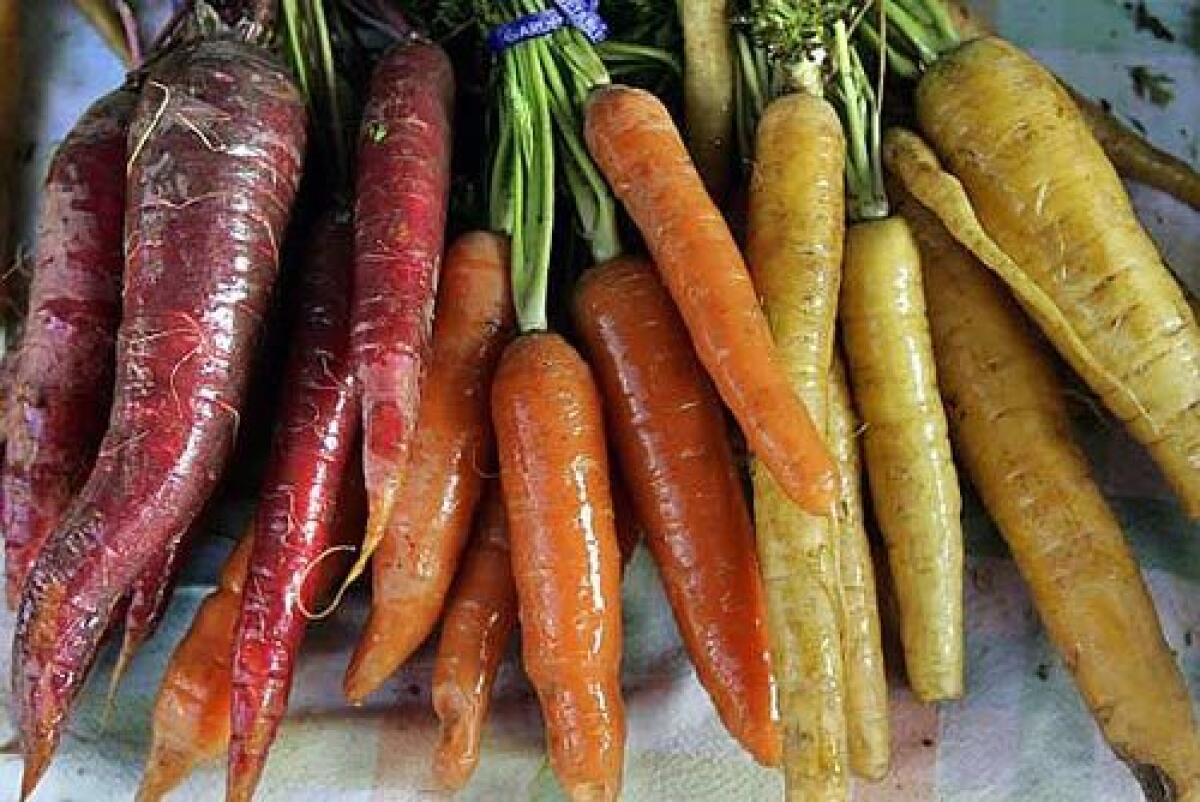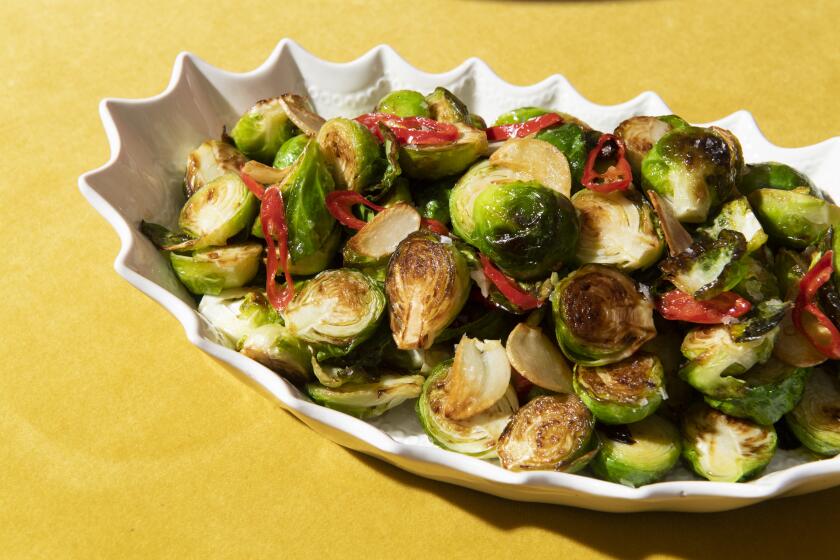How to wash fruits and vegetables during the coronavirus crisis

- Share via
Since I shared tips on how to keep your home kitchen clean, we’ve gotten a fresh batch of, “Wait, how should I be washing stuff in my kitchen?” questions. We’re here (at cooking@latimes.com) for it.
The U.S. Department of Agriculture has declared on its coronavirus FAQ page: “We are not aware of any reports at this time of human illnesses that suggest COVID-19 can be transmitted by food or food packaging.”
Dr. Jennifer Ling, an infectious disease specialist, explains how it is transmitted: “Typically, patients acquire COVID-19 through close contacts with others who transmit droplets that land on another’s mouth and/or nose. It is also possible to acquire it if you contact a surface with the live virus, then touch your mouth, nose or eyes.”
Here are eight tips for cooking clean in your own kitchen to prevent germs from spreading and to make the cooking process more pleasurable.
Even if there’s no reason to think that your tomatoes are covered in coronavirus, there’s also no reason not to wash what you bring home. But don’t use dish soap or other household cleaners to wash fruits and vegetables.
I’m comfortable with a nice, thorough rinse under water for all produce, and wash items I’m going to peel or cook anyway. I like to get rid of dirt and grit (as well as any pathogens). Once the produce is well-washed in my just-cleaned sink and kitchen, I eat or cook them right away and I’m perfectly at ease.
Some strategies for washing fruits and vegetables:

Lettuces and other leafy greens: Fill a large bowl with water and immerse the greens in it. Swish the greens around to loosen any grit, let stand for a minute so the grit can drop to the bottom of the bowl, then lift the greens out into a colander. If they’re really sandy, repeat, rinsing the bowl clean first. Run the greens in the colander under cold water very thoroughly, using a sprayer if you have one.

Root vegetables: Since these grow in the dirt, they’re often quite, well, dirty. I like to scrub them under running water with my handy vegetable brush. If you don’t have one, you can use your fingers to scrub off any caked-on dirt.
Mushrooms: Some chefs prefer to never let mushrooms get wet because they absorb water like a sponge, which makes them steam instead of sear in a hot pan. I still wash them, quickly swishing them in a colander under the hardest blast of water I can get from my sprayer. If any clumps of dirt remain, I pluck them off while rinsing. Immediately after rinsing, spread in a single layer on a clean kitchen towel or paper towels to dry.
Sturdy vegetables and fruits: For items such as green beans, asparagus, cucumbers and grapes, rinse well under a high-pressure stream of water while rubbing with your hands. Let dry in a clean colander if needed.
Delicate vegetables and fruits: For soft stuff such as tomatoes, ripe stone fruit and berries, rinse under a steady but low-pressure stream of water, turning the items gently with your hands to ensure all sides are rinsed but not bruised. Spread on a clean kitchen towel or paper towels to dry so they don’t get crushed.
Cooking fruits and vegetables kills germs, so if you’re worried about eating raw produce, here are 10 of our favorite cooked vegetable dishes:
Applying heat to vegetables intensifies their natural sweetness and makes them extra delicious.
More to Read
Eat your way across L.A.
Get our weekly Tasting Notes newsletter for reviews, news and more.
You may occasionally receive promotional content from the Los Angeles Times.












